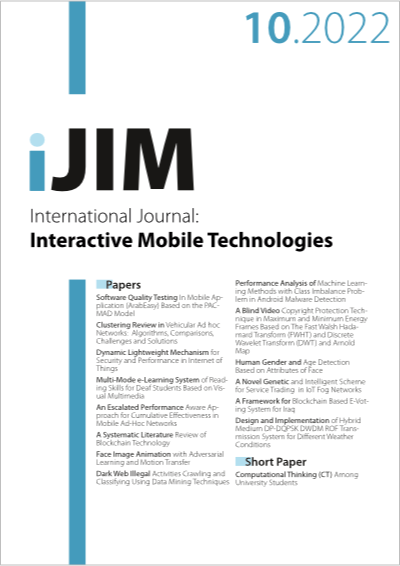Dark Web Illegal Activities Crawling and Classifying Using Data Mining Techniques
DOI:
https://doi.org/10.3991/ijim.v16i10.30209Keywords:
Linear Support Vector Classifier, dark Web, Naïve BayesAbstract
Dark web is a canopy concept that denotes any kind of illicit activities carried out by anonymous persons or organizations, thereby making it difficult to trace. The illicit content on the dark web is constantly updated and changed. The collection and classification of such illegal activities are challenging tasks, as they are difficult and time-consuming. This problem has in recent times emerged as an issue that requires quick attention from both the industry and academia. To this end, efforts have been made in this article a crawler that is capable of collecting dark web pages, cleaning them, and saving them in a document database, is proposed. The crawler carries out an automatic classification of the gathered web pages into five classes. The classifiers used in classifying the pages include Linear Support Vector Classifier (SVC), Naïve Bayes (NB), and Document Frequency (TF-IDF). The experimental results revealed that an accuracy rate of 92% and 81% were achieved by SVC and NB, respectively.
Downloads
Published
How to Cite
Issue
Section
License
Copyright (c) 2022 Haider Th.Salim Alrikabi, Abdul Hadi M. Alaidi , Roa'a M. Al_airaji, Ibtisam A. Aljazaery, Saif Hameed Abbood

This work is licensed under a Creative Commons Attribution 4.0 International License.



